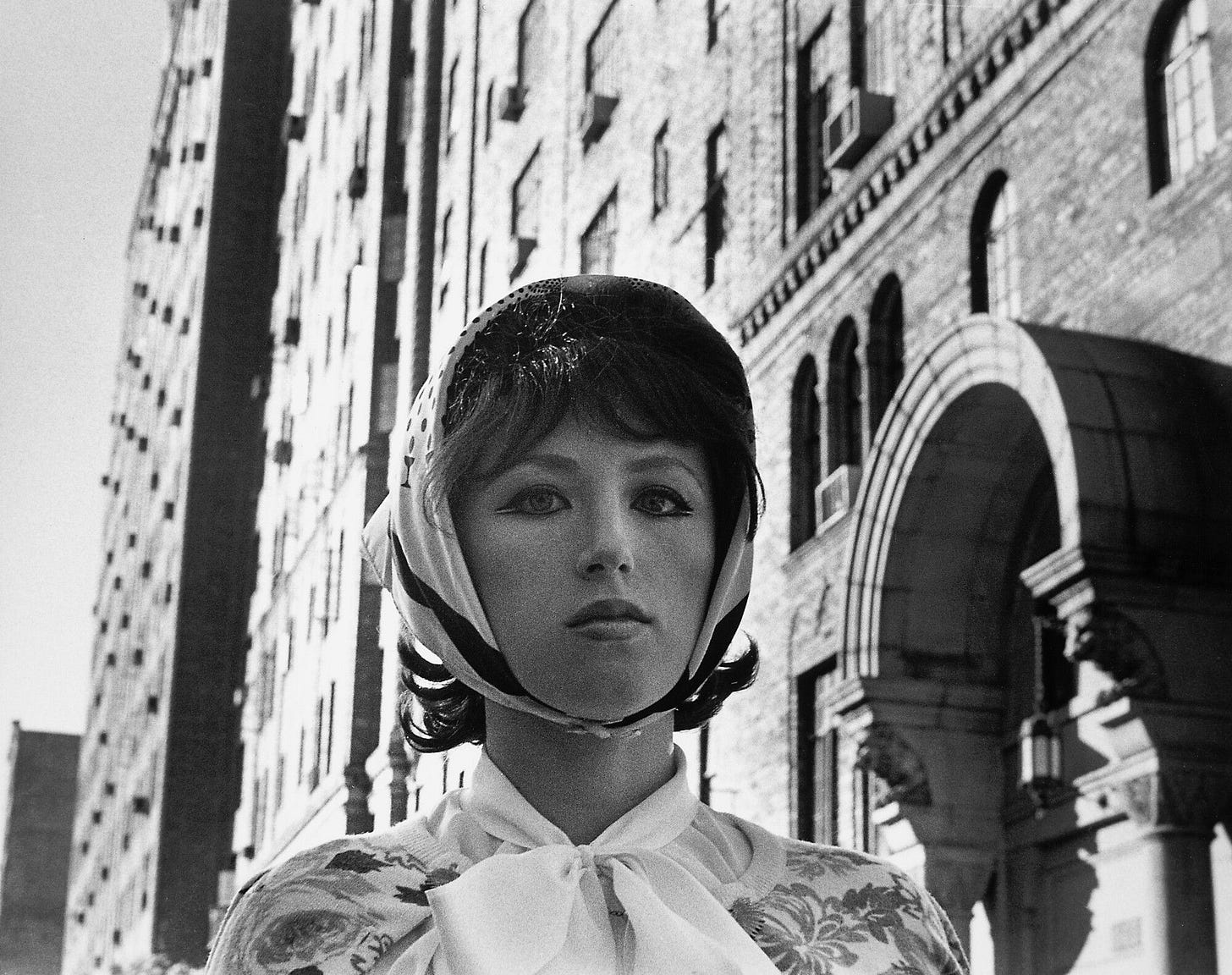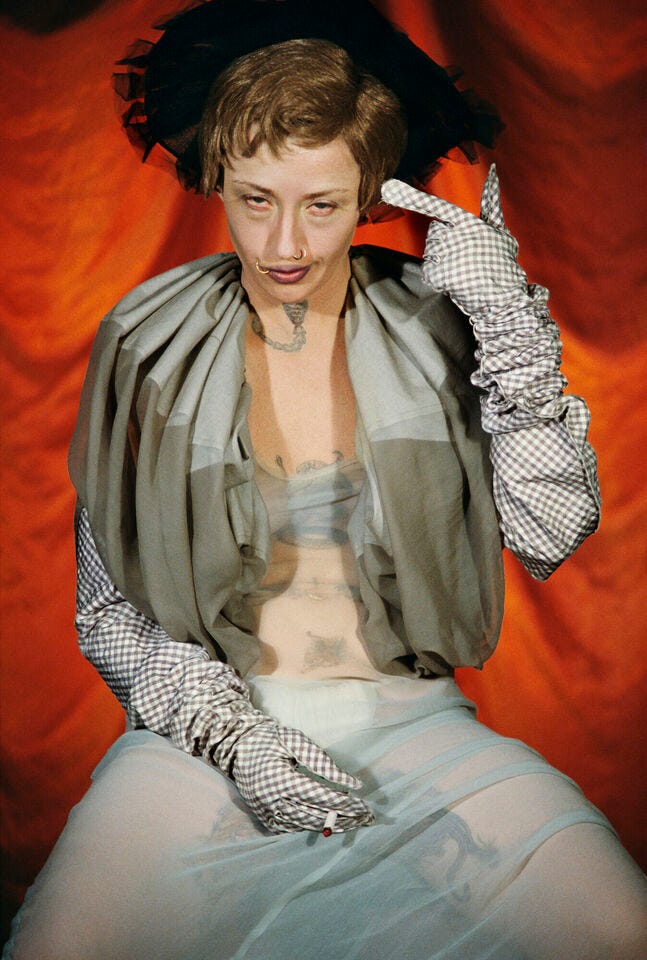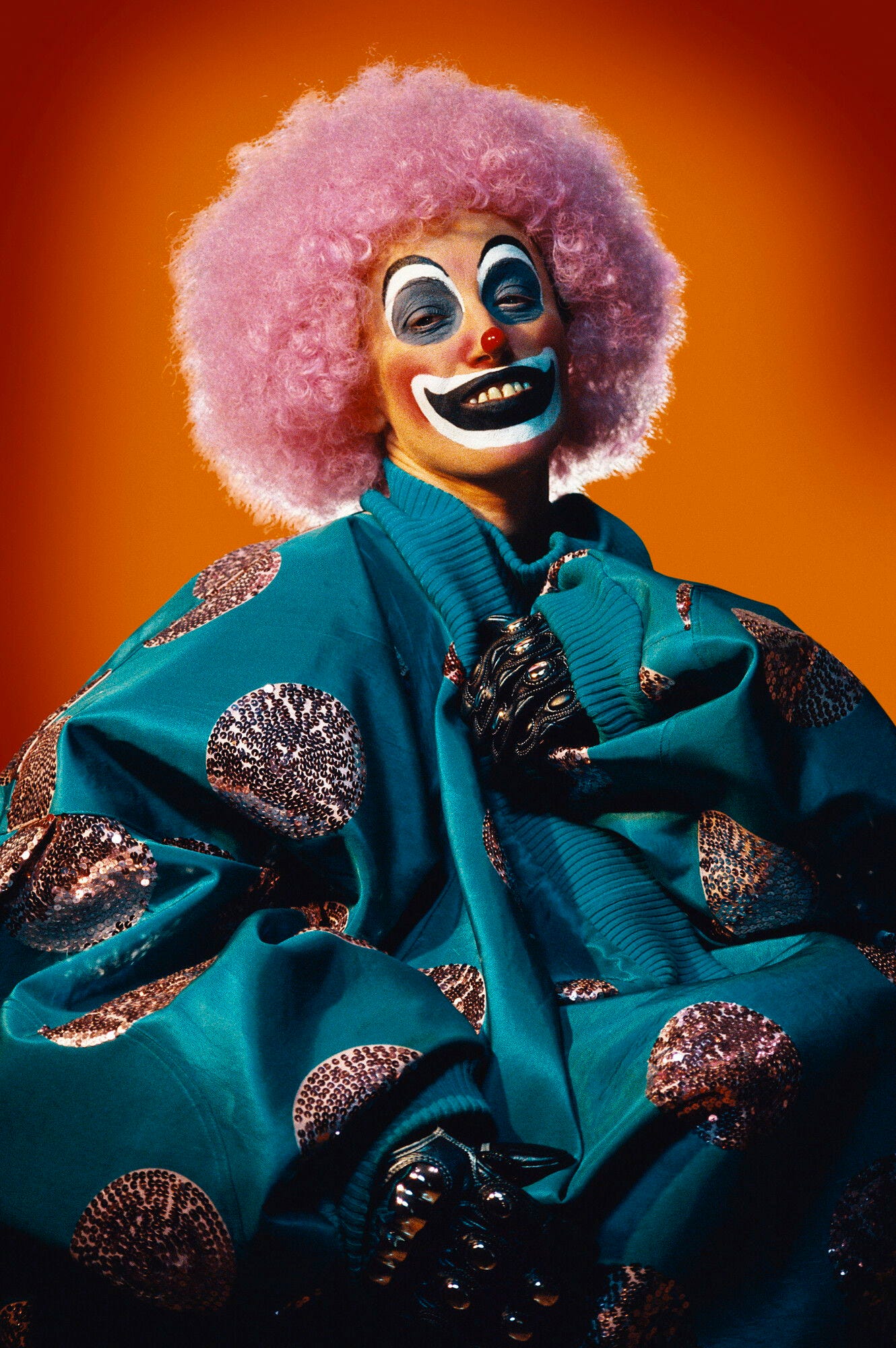The Art World's Shapeshifter: Cindy Sherman at FOMU Antwerp
Her first show in Belgium showcases her impact on the visuals of contemporary fashion while elegantly omitting some uncomfortable truths.
Before seeing this show, I had no strong emotions toward Cindy Sherman (Baby Boomer, US-American). I’d enjoy her work if I came across it, acknowledging her standing in art history and that’s it. The retrospective at the FOMU Antwerp gave me plenty of reasons to love her art. And some reasons to be critical of it…
One thing straight away, I didn’t quite grasp the show's organizational structure. The exhibition is promoted as one retrospective, but there are in fact two: One part is titled Cindy Sherman – Early Works 1975-1980, and the other Anti-Fashion. It’s not like one show with varying subtitles. Even the design is different in both presentations. While the first part “is developed in collaboration with Gabriele Schor, Founding Director of the VERBUND COLLECTION, Vienna”, the second “is realised by the Staatsgalerie Stuttgart in cooperation with Cindy Sherman’s studio in New York and her gallery Hauser & Wirth.” Anti-Fashion was also shown at Deichtorhallen Hamburg last year… So a part of this is a wandering exhibition and the other is not? What in the patchworking is going on? Something about this is sketchy, we’ll get to that later.
The Old Days
As far as I can judge based on the installation shots of the past venues, FOMU did switch some works for their turn, so we’re not exactly dealing with a copy-paste situation here.
From the early works, I loved Cindy’s 2’22’’ minute-long looped video Doll Clothes (1975): An undressed paper doll gains awareness of her nakedness just like Eve in Garden Eden, going out to find an outfit for herself. She leaves her book to observe herself in a mirror, happy about her choice, only to be violently snatched by a human hand, undressed again, and put back into the book. Ashamed, she moves and twists until she assumes the pose of what the exhibition refers to as an actor pose, foot forward and palms opened. I much rather think of Saint Francis revealing his wounded hands.

Otherwise, this part focuses on her Untitled Film Stills (1977-80) series, consisting of unique shots featuring herself as fictional characters in fictional movies. Through lighting, setting, camera angle, costumes, and expressions, Cindy suggests a narrative based off one single picture. Those narratives feature an isolated woman, voyeuristic fantasies, pretty girls and crying girls and lonely girls and seductive girls and serious girls, very much in line with the archetype of women in movies of Golden Hollywood. A foundational part that leads to the expectations fashion editors would later hire her for: Do make-up, but keep it flattering. Play a role, but play an attractive one. Tell a story, but put on a seductive voice. Address feminism, but do so feminine. We go from what I’d call the classy years, the demure and mindful days, if you will, to her unhinged commissions.
A Deranged Direction
Cindy’s ironic relationship to fashion comes to light overtly in her Cover Girls series from 1975: She takes a magazine cover featuring a female model, then adds a version with her face mimicking the original, and a third one comically exaggerating the original. For the Mademoiselle College edition, Cindy turns the smiling young model into a pouty cross-eyed snob, great fit for the featured article “133 terrific things to wear for campus, country, city & job”. I suspect country means country club, not countryside [laughs in wealthy].

But even the Cover Girls series is quite tame compared to the shots she handed in for her fashion editorial commissions in the 80s: shadows cast on wrinkly blemished skin, tomboy haircuts, slumpy silhouettes, bodily fluids, beer and cigarettes, tattoos (I tend to forget that they used to be out), and garish lighting (color analysts are screaming hysterically right now).
I see how the fashion editors first didn’t have it when they hired cinematic-film-still Cindy and got crooked-teeth-and-stained-shirt Cinderella instead. Cindy took the opportunity to address the visuals of womanhood not through an aesthetic lens as expected but through a crude one. It took some time for avant-garde fashion to catch up with its avant-garde visualisation and the results are iconic.
Untitled #302 (1994) features a disheveled doll with another doll's head peeking out her ripped-open chest. Cindy walked so The Substance (2024) could run (and trip). For Untitled (Cosmo Girl) (1990-91), Cindy dressed up as a pregnant woman in a tight white wet blouse. What’s the issue suddenly? I thought y’all loved wet shirt contests. Saint Mary is white? Say no more: Cindy gave the mother of God a white lip liner, bleached her brows, and added cheap platinum blonde extensions for Untitled #276 (1983). You meant she’s a different type of white, didn’t you? And staying with saints, she gave a Clown a saintly halo made out of dizzy background effects. Crying and looking up like a proper Mary Magdalene.
For Chanel, she did the Landscapes in 2010, putting inappropriately dressed models into adverse environments. Cindy really did that before the Balenciaga W 2022 runway. In her latest series Men (2019-2020), she cosplayed masculinity: In Untitled #615 (2019), Cindy’s posing as a young man, manspreading on a stool against a landscape backdrop. His bucket hat, jacket, and shorts first seem to have a military camouflage look, but the pattern actually features stereotypically manly depictions of cowboys, hunters, and cavemen. The overlay triples the persona in size, big size for big man, huh? And yet the light brown button-down turns the look into a boyscout fit. An almost twinning front-facing couple with a close-up overlay of their faces in Untitled #612 (2019) just has to be a nag at Gilbert and George (both Silent Generation, British).

Addressing Class and Lack Thereof
In 2007, Cindy did a Balenciaga campaign for Vogue, taking on the role of aging socialite women, basically doing a Sex and the City (1998-2004) sequel way before And Just Like That (2021) came out. Untitled #459 even looks a bit like Natasha… These women try their best to stay fashionable, regularly attending their botox and filler appointments, still out at the parties and on the guest lists. Untitled #461 (2007/2008) with its squinting protagonist holding a drink in her hand reminded me a lot of those cheap club promotion photoshoots that end up on social media. The photographed person must always be sweaty and the picture must be taken in the most unflattering way possible for some reason.
In 2016, she did a shoot for Harper’s Bazaar playing Influencers and Fashion Bloggers. Cindy deadass foreshadowed @influencersinthewild. I was a big fan of Untitled #590 (2016/18), featuring the protagonist grinning with a slight shrug, another distorted version overlayed on top. I am highly disappointed that the exhibition doesn’t address the parallel overlay meme phenomenon of that time which has its roots in 80s portrait photography. I think it’s plausible for an artist working with caricature and irony to reference caricaturesque meme culture.
But I keep wondering: Does Cindy actually address class? Yeah, she makes fun of rich people, but in a way that makes the same rich people browse through Vogue and go OMG that’s so me when the-. Is there any deeper content other than fashionable ridicule?

It’s quiet in here… too quiet…
Walking through the show, I was happy not only because of what Cindy did, but especially because of what she didn’t do: No Blackface to be found, no race switching in sight either. Well, is masquerade without racism so hard to do? I thought to myself, If Cindy is doing fine, why can’t everybody else?
Lingering on that relief, I walked over to a glass display where my illusion slowly cracked: A FW 1993 campaign Cindy did for Comme des Garçons: Wearing a black slick wig, Cindy kneels on a fabric hill, hands folded and looking to the side. Tree branches slightly obstruct the view. I can’t say for sure what she’s wearing, it seems to be a dress and a coat with long ornamental sleeves. What I can say though is that both her costume and pose play with historical Japanese depictions of women, an example would be the woodcuts by Utagawa Toyokuni (Japanese, Edo-Period). Well, I mean…, I told myself, scratching my head, Comme des Garçons is a Japanese brand, and they specifically hired her for the job. If they approved it, they must have been fine with her take, I guess…? And yet I had to face that Denial is a river in Egypt…
A friend later reached out via Instagram and broke to me that Cindy did in fact cross the line more overtly: She did blackface in 1976 in her Busriders series (take the linked article with a grain of salt). Why, Cindy? Why did you do this to us? Some argue that she did not actually do blackface but a “caricature of racism”, we’ll have to discuss the legitimacy of this argument another time.
I gotta ask FOMU now: Are there any other problematic aspects you omitted? I’ll say it again: This is Cindy’s first exhibition ever in Belgium. It presents Cindy as a perfectly uncontroversial artist, or better said: controversial in the correct way. Sweeping controversy under the rug is nothing I’d expect of a serious museum. But given that mega-gallery Hauser & Wirth supports the show, it’s not surprising. We wouldn’t want to hurt those sales, wouldn’t we?
Cindy Sherman is on view until February 2, 2025, at FOMU Antwerp.
FOMU
Waalsekaai 47
2000 Antwerp
Website
Instagram: @fomuantwerp
That’s the first review of 2025! And just like last year, we started with Antwerp. What do you think of this rundown? Let me know in the comments and leave a like if you enjoyed it.
See you soon!!!
Jennifer
The Gen Z Art Critic




